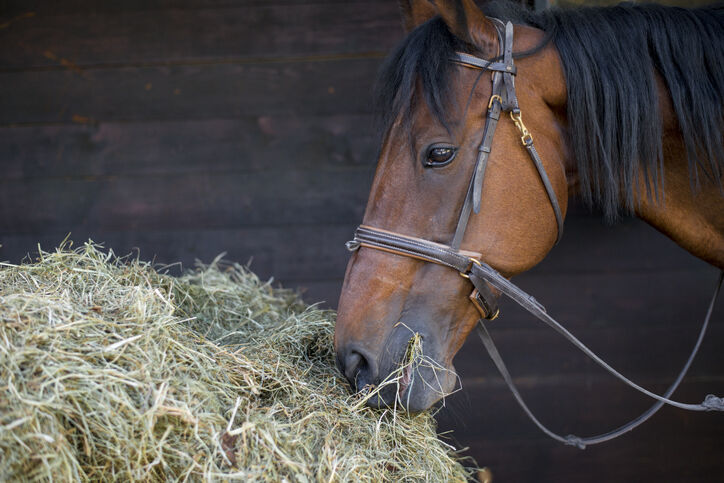Horses are meant to consume a diet based on forages, mainly pasture and hay. A hay analysis will reveal the specific amount of various nutrients that are found. These days, it is relatively simple to obtain a hay analysis. Once a sample is collected and placed in a labeled bag, the sample is shipped off to a laboratory for analysis.
Understanding the hay analysis report can be tricky. The results are full of abbreviations and numbers and percentages, and it can leave a person unsure what “good” and “bad” numbers are. There are several key nutrients that you should focus on in a hay analysis. In the values listed for the nutrients below, apart from moisture, the values are for “dry matter” (DM).
Moisture: the ideal moisture for hay is around 15%. If the moisture is less than 10%, the hay will be very dry and lose a lot of nutritious leaves to shattering. The hay will also not be palatable if it is too dry. If the moisture is greater than 18%, there is a risk for mold forming in the hay, and if the moisture is greater than 20%, there is a risk for spontaneous combustion.
Crude Protein (CP): For adult horses, adequate protein should be provided by the hay if the CP value on the analysis is about 10-12%. If you have young horses, horses in high-intensity exercise, or broodmares that are lactating, you will want higher CP. The type of hay can impact the amount of CP. Typically, legumes such as alfalfa will have higher CP as compared to grass hays.

PSU Extension recommends testing and choosing the right hay supply for your horses to support good health.
Acid detergent fiber (ADF): This refers to cellulose and lignin. The ideal ADF for horses ranges from 30-45%. ADF impacts digestibility, so the higher the number, the less the hay will break down inside your horse’s gut. This is an estimate of fiber in the hay.
Neutral detergent fiber (NDF): This refers to cellulose, hemicellulose and lignin. The ideal NDF ranges from 40-65%. NDF is negatively correlated with forage intake, so the higher the number, the less hay your horse will eat.
Nonstructural carbohydrates (NSC): The hay analysis will have measures of different types of NSC. This will include any of the following: starch, water soluble carbohydrates (WSC) and ethanol soluble carbohydrates (ESC). Each of these will measure slightly different combinations of carbohydrates; for example, ESC measures simple sugars, like glucose and sucrose, while WSC measures simple sugars as well as fructans (naturally occurring plant sugars). There is not an ideal NSC number for all horses, but for horses that suffer from chronic laminitis or other metabolic disorders, it is recommended to keep NSC below 10-12%. The hay analysis may not include NSC, but you can estimate it by adding together WSC and starch.
The list above does not include all the nutrients that you might find in a hay analysis. For example, the number of certain vitamins and minerals in your forage will be listed, such as calcium and phosphorus. The ideal amount of certain nutrients will vary for each horse, and is impacted by factors such as health, activity/exercise level, age, and body condition score.
A hay analysis provides a lot of useful information about your horse’s forage, which is important in making sure your horse has a well-balanced diet. Remember that you should select hay based on your horse’s needs. For horses that suffer from diseases such as chronic laminitis, equine metabolic syndrome, or obesity, a hay analysis is critical to controlling the disease. If you are unsure how to balance your horse’s diet, work with an equine nutritionist.
Refer to your forage-testing laboratory for directions on correctly taking a hay sample. Your local Extension office can help you with taking your hay sample, so contact them for help if needed. A list of certified forage-testing laboratories is located on the National Forage Testing Association website.




